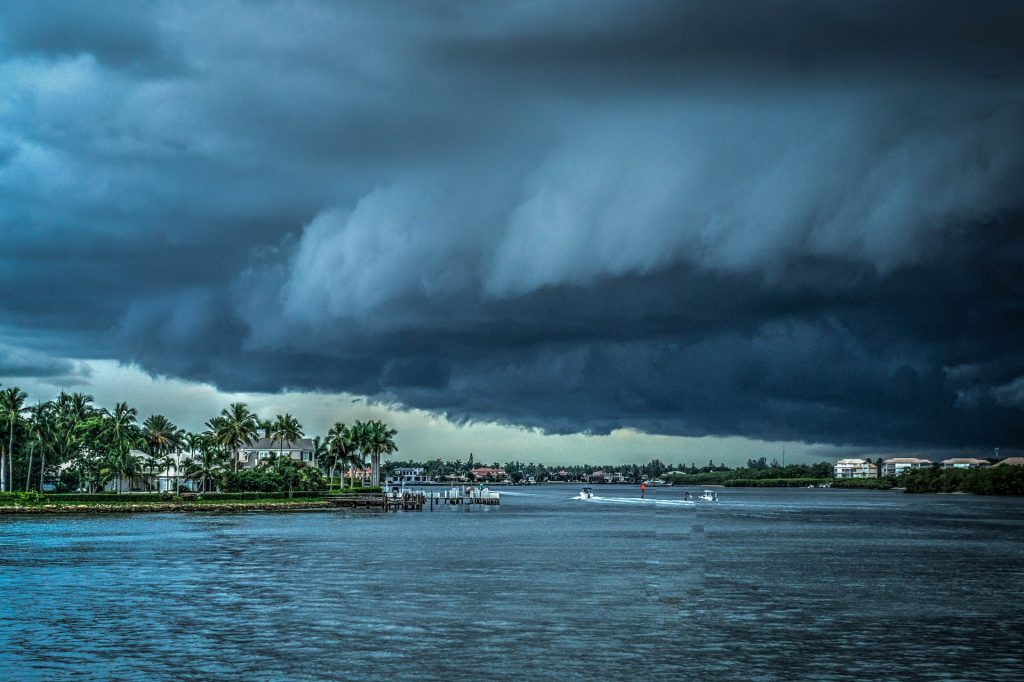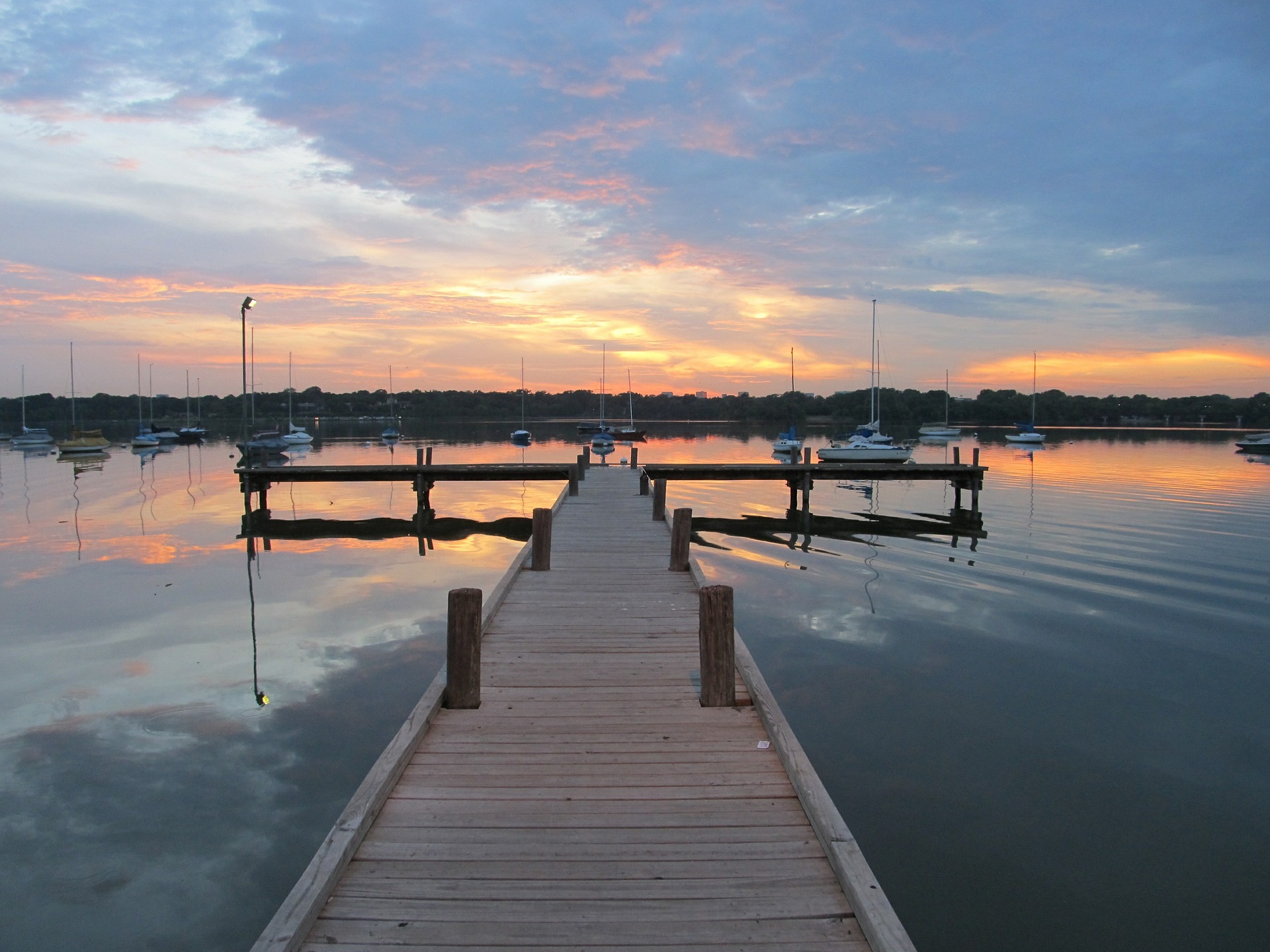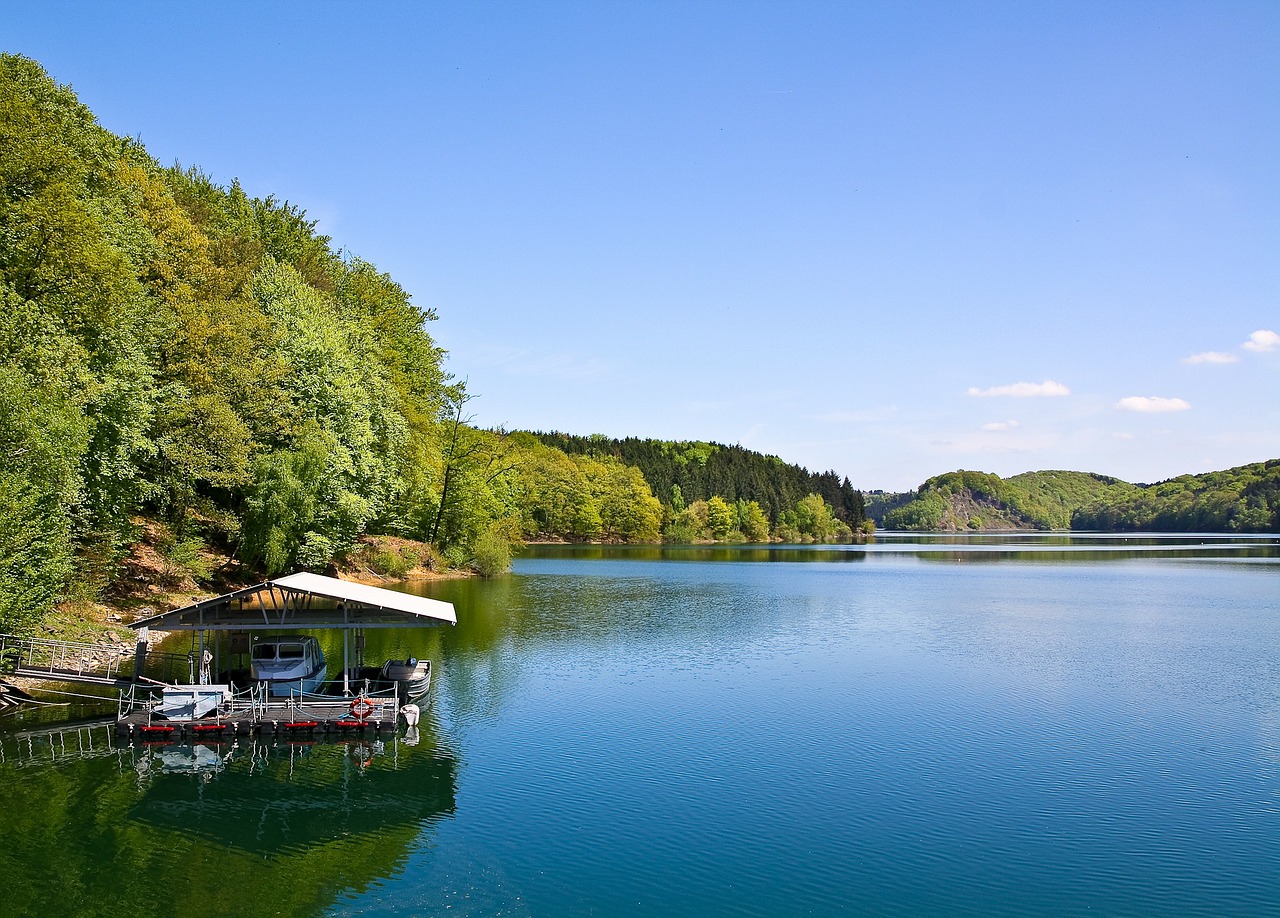
Hurricanes are large tropical cyclones with sustained winds that range anywhere between 74 to more than 157 mph, and are known as the most violent storms on Earth. These cyclones are composed of only two ingredients to create massive storms: heat and water. When hot air rises from the ocean’s surface, it leaves lower pressured air below it. The process of higher pressured air moving to lower pressured regions creates a circular motion that can produce swirls in the air. Once hot air is high enough in the atmosphere, it condenses and cools into clouds; and if these vortexes of air and clouds get large enough, it can cause a storm. This is your guide on how to protect your boat as well as yourself in situations like these BEFORE, DURING AND AFTER THE STORM. Because the most important plan is having a plan!
First, some facts to know.
- The Atlantic hurricane season runs from June 1st to November 30th each year. So, if you live in a coastal marine environment, it can be the most dangerous 6 months of the year.
- There are five categories of hurricanes. These storms are categorized by severeness. It is important to know what each level means for you as well as your home. :
Category 1: 74 to 95 mph
Category 2: 96 to 110 mph
Category 3: 111 to 129 mph
Category 4: 130 to 156 mph
Category 5: 157 mph and above
BEFORE
If there is enough notice, the best form of action is to get as far away as you can! In some instances, an evacuation posting will be made if the storm is not safe to hunker down in. If not deemed necessary or capable, we understand, and so the second option comes into play. To help with rain water build up, make sure gutters are clean of debris and are secured to the home. Reinforcing entries, garages and windows are also great preventers. It’s also a smart idea to have a hurricane safety kit somewhere in your home that holds anything you would need in the case of an emergency (flashlight, first aid kit, extra batteries, water, etc.)
Step One
When it comes to your boat, same as relocating yourself- the best option is to relocate your vessel. If the only option is to leave the vessel on its boat lift, the first step is to make sure that it is tightly secured. Any exposed loose items on board, like seat cushions and canvas, should be removed and stored in a secured area. They could potentially be lost or destroyed in the storm. Critical gear such as engines, generators, and electronics can be “bagged off” to protect from rain damage, but it’s not recommended to cover the battery because it may trap escaping gasses and cause an explosion hazard. The most critical preparation is to make a reliable draining system to prevent water accumulation in the vessel, which could overload the lift as well as drown the engine and battery. It is not uncommon for rainfall to exceed 12 inches! It is not wise to rely on bilge pumps for water evacuation since they can be rendered useless in a storm, therefore leaving your vessel vulnerable. They are only capable of pumping so fast considering they are meant for regular weather conditions. Search for the external drain plug, which is located in the lowest point of the vessel. Most boats should be equipped with this. Remove the plug so that gravity will drain water, but remember the water has to be able to flow freely. Check these escape routes to ensure they are clear of any and all debris.
Step Two
After you have secured all boat equipment and prepared for the rainfall, the next step is to secure the vessel with the lift system. All mechanical lift systems, pile-mounted lifts, elevators, and davits have maximum lifting height, which is the highest point you will be able to raise your boat out of the water. *If you do not know what that height is, please contact your manufacturer or your installing contractor for assistance in determining what that elevation is. You want to lift your boat above the estimated surge height if possible and secure it to an adjacent structure to prevent it from moving while on the lift system. Adding temporary bracings prevent the vessel from moving and are easily placed and removed. These bracings can be done with simple mooring lines, but if you would prefer using larger ratchet straps you may do so.
Once the vessel is secured, the ideal line position will be as far fore and aft as possible, 90˚ to the centerline of the boat and 45˚ down from the horizontal plane of the fastening point on the vessel. If the anchor points on the adjacent structures aren’t in the correct location, just get as close as you can with as many lines as you can. Once the lines are secured, raise the lift and boat to the maximum height to create additional tension in the lines. This process may take some experimentation with the ropes, knots and lift travel needed to get everything secured. During this process, be aware that the additional tension being added to the lines adds load to the lift. Make sure not to make power of the lift cause an induced overload situation. There is no guarantee that it will outlast storm winds, but at least you made your best attempt to secure. An important factor to look into is whether your boat has hurricane coverage on your insurance. Chances are if you live in a prone coastal marine environment, you have it – but double checking never hurts!
DURING
While the storm is taking place, hunker down and stay there. Remember that materials are replaceable, but YOU AREN’T!
AFTER
Examine the boat exterior for any damages that the storm could have caused (holes, missing or damaged parts, etc.). Make sure before lowering the boat back in the water, reinsert the drainage plug to not retake on flooding in the vessel. If there are noticeable damages, these are things to discuss with your insurance company. An amount of the damages or the total should be covered in your policy. That hurricane preparation you completed may come in handy when discussing your insurance settlement with your adjuster.
Remember that hurricanes are natural creations and there is no way of you preventing it. As long as you had a plan set, you have done the best you can. This hurricane season, make sure you have practiced ahead of time. You will feel like a pro in either scenario of relocating or securing.

Boating is Texas is alive and well, with thousands flocking to popular beaches, bays, rivers and lakes for some world-class fishing or scenic cruising in the Lone Star State. If you’re a local or simply visiting Texas for a bit of leisure time, make sure you know these quick takeaways before hitting the water. From age requirements to education courses, these must-learn facts can help you chart your course before heading into unknown waters.
5 Considerations Before Boating in Texas
- Who to call during a boating accident? If you are involved in a boating accident that results in injury (requiring treatment beyond first aid) or death, or causes damages to property in excess of $2,000, you must report it to the Texas Parks and Wildlife Department (TPWD). You only have 48 hours to report an accident resulting in a fatality, but 30 days to report less serious accidents.
- Where can I complete my boating education? To legally operate a boat or PWC with more than 15 hp, you must first complete a boater education course, unless you were born before September 1, 1993.
- Can I drink while operating a boat? Open container laws do not apply to watercraft. However, operating a boat while intoxicated is a crime that could result in a driver license suspension, fines, or even jail time if involved in an accident while intoxicated.
- What identification do I need to carry while boating? Boaters must carry a picture identification card, as well as a boater certification card (if applicable).
- What’s the minimum age requirements for boating? Though boating in Texas can be fun for all ages, operators of vessels with more than 15 hp must be at least 13 years old. The same applies for windblown vessels of more than 14 feet.
The TPWD is a fantastic source of info for first-time boaters in Texas, so we highly suggest starting your research there if you have any questions about your next boating adventure. Texas is known as a big state, but also one that’s full of variety. Take advantage of that variety by exploring all the beautiful state has to offer, both on and off the water.

Maybe you already own a boat or perhaps you’re a brand new dabbler in the watercraft scene. Either way, you may be looking for a bit of guidance before buying a jet ski, since they and other personal watercraft (PWC) come with their own set of unique considerations to take into account. These vessels may seem a bit intimidating and can cause a bit of apprehension before diving into the specifics of ownership. Taking that into consideration, we’ve all marveled at jet skis zipping across the open water; why not explore what it takes to get in on the fun yourself?
Tips to Consider Before Buying a Jet Ski
- Do Your Homework: Like any other purchase, you should always do some research before buying a jet ski or other PWC. Though not as pricey as full vessels, there is little worse than investing in a PWC that goes unused or underused. Consider speaking to dealers, consulting with friends that own PWCs and even renting a jet ski for an afternoon to see if you like how they perform on the water.
- Utility: How many people do you plan on cruising with? Similar to motorcycles, seating is often limited on jet skis and PWCs; some can handle having up to three people, including the operator, on board.
- Don’t Forget Safety: When buying a jet ski or PWC, many forget to consider safety equipment and boating regulations. For instance, jet ski operators must have an engine cutoff switch lanyard attached to their person, as well as wear an approved personal floatation device.
- Need a Lift?: Though you may think finding a boat lift for such a small vessel as a PWC or jet ski would be a time consuming and difficult task, you’d be wrong. We offer a variety of options that are custom made for PWCs. Built with the same strength and durability as our big boy boat lifts, getting a lift you can trust shouldn’t even be a concern after buying a jet ski.
Taking a look at the numbers, PWC accidents and fatalities were lower in 2014 than they were in years past. Even so, we always recommend you always enjoy the water with safety in mind. After doing a bit of research, considering what your needs are, remembering the necessary steps to safety and finding the right lift for your prospective vessel, you may just be ready to enjoy a jet ski adventure or PWC excursion this summer.

From sweltering heat to monsoon-like downpours, The Sunshine State has weather that’s just a tad on the extreme side. That being said, your boat is bound to take a beating. How can you protect your boat from suffering while out in the elements? From boathouses to waxes, we have a few suggestions to keep your boat shipshape in Florida’s famous sunshine.
How Can I Protect My Boat From the Elements?
- Rinse and Repeat: A vital first step to keeping your boat protected is to clean up your act the right way. Wax and other protectants will not work correctly if you don’t clean your boat thoroughly. Only use boating-specific soaps, however, since some soaps may actually repel the protective waxy coat, you may apply this later.
- Wax On, Wax Off: Though not a necessary step after every boating trip, you should absolutely take the time and energy to wax your boat after washing it. Similar to the benefits of waxing your car, a thoroughly waxed boat will not only have a beautiful sheen but will also be protected from the sun’s ultraviolet rays. Again, ensure that you use a boating-specific wax to ensure that you’re using the right tool for the job.
- Welcome Home: Consider utilizing a boathouse. Boathouses have been used for ages to protect boats from the elements, safely shading them from the sun and rain. With boat lifts made specifically for boathouses, your vessel can be safer than ever.
Though boating is a great way to enjoy some fun in the sun, don’t forget that that very sunshine can cause big issues for your boat’s finish. Prepare by washing your boat regularly, waxing on occasion and keeping your vessel under the cover in a boathouse. Just remember, keeping your boat clean isn’t all about looks; regularly cleaning and waxing is important for both the resale value and long-term care of your vessel.

Water, especially water with high salinity, can be a big headache to many a metal surface if not properly protected. Unfortunately, many first timers and novice boaters do not know how to prevent corrosion on their vessel, often leading to costly repairs. Others fail to see the warning signs or truly understand how corrosion begins. We take a look at this ugly and potentially costly problem in order to discover the best methods of prevention.
Two Common Types of Corrosion
Stray Current Corrosion: Coming from internally or externally, this type of rapidly corroding reaction occurs when poorly insulated wiring causes electrical currents to run through the metal of your boat to reach a ground. A galvanic isolator is a viable solution for this fashion of corrosion, though it is also important to ensure that all of your wiring is properly insulated and secure as well.
Galvanic Corrosion: If two, electrochemically different metals are submerged in an electrolyte-heavy liquid, you’re bound to find corrosion. This is most prevalent in boating when looking at parts that use both aluminum and stainless steel. Since stainless steel is more active than aluminum, you may find that your aluminum parts show signs of corrosion more quickly than the steel. To help prevent this issue, many boaters use sacrificial anodes, designed to attract this corrosion away from the important and pricey parts that would otherwise be sacrificed. Look out for paint blistering and chipping away, as well as a whitening effect on your metals.
Though there are other forms of corrosion that pose a danger to your vessel, these are the two that can be the most dangerous and destructive. Ask a boating professional for further tips on what to look for when inspecting your boat, as well as how to prevent corrosion after enjoying your time on the water. A little preparation can go a long way towards saving you big money on your boat.
For more on understanding corrosion: BoatUS.com






